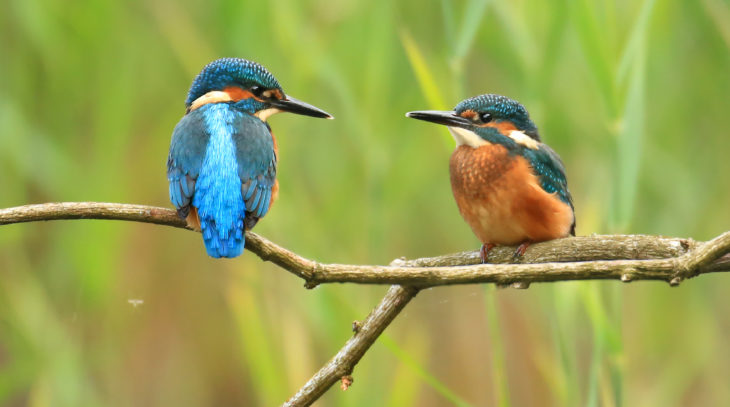Eight facts about kingfishers
This time last year we were treated to regular sightings of the kingfisher here at the Falls of Clyde and this year is proving no different. So I thought you might like to know a little bit more about these amazing little birds, which is why I am sharing eight interesting facts about them.

- Kingfishers eat mainly fish, chiefly minnows and sticklebacks, but they also take aquatic insects, freshwater shrimps and tadpoles.
- They close their eyelids (or nictating membrane) as they dive into the water. They bob their heads before diving to accurately judge the depth of the fish.
- Kingfisher courtship occurs in spring. The male will approach the female with a fish in his beak. He will hold it so that the head of the fish is facing outwards and attempt to feed it to the female. If he is unsuccessful he will simply eat the fish himself. He may have to repeat this feeding behaviour for some time before mating occurs.
- A kingfisher pair dig a nest tunnel in vertical, sandy river banks. The nest chamber at the end has a slight depression to prevent eggs rolling out, but no material is brought into the nest.
- The first clutch of 6-7 eggs is laid in late March or in early April. Each chick can eat 12-18 fish a day meaning the adults may catch over 120 fish each day for their brood.
- Chicks are fed in rotation. Once a chick is fed, it moves to the back of the nest to digest its meal, causing the others to move forward.
- Once out of the nest, the young are fed for only four days before the adults drive them out of the territory and start the next brood. 2-3 broods are often raised in a breeding season.
- The design of a kingfisher’s beak is aerodynamically efficient, allowing it to dive from its perch, towards its prey, with maximum speed and minimum splash. In fact, the beak design is so clever that the front of many Japanese bullet trains are modelled to mimic it.
Laura Preston, Falls of Clyde Ranger
Help support our vital work and join us today!
Help protect Scotland’s wildlife
Our work to save Scotland’s wildlife is made possible thanks to the generosity of our members and supporters.
Join today from just £3 a month to help protect the species you love.
Preface
This time last year we were treated to regular sightings of the kingfisher here at the Falls of Clyde and this year is proving no different. So I thought you …
